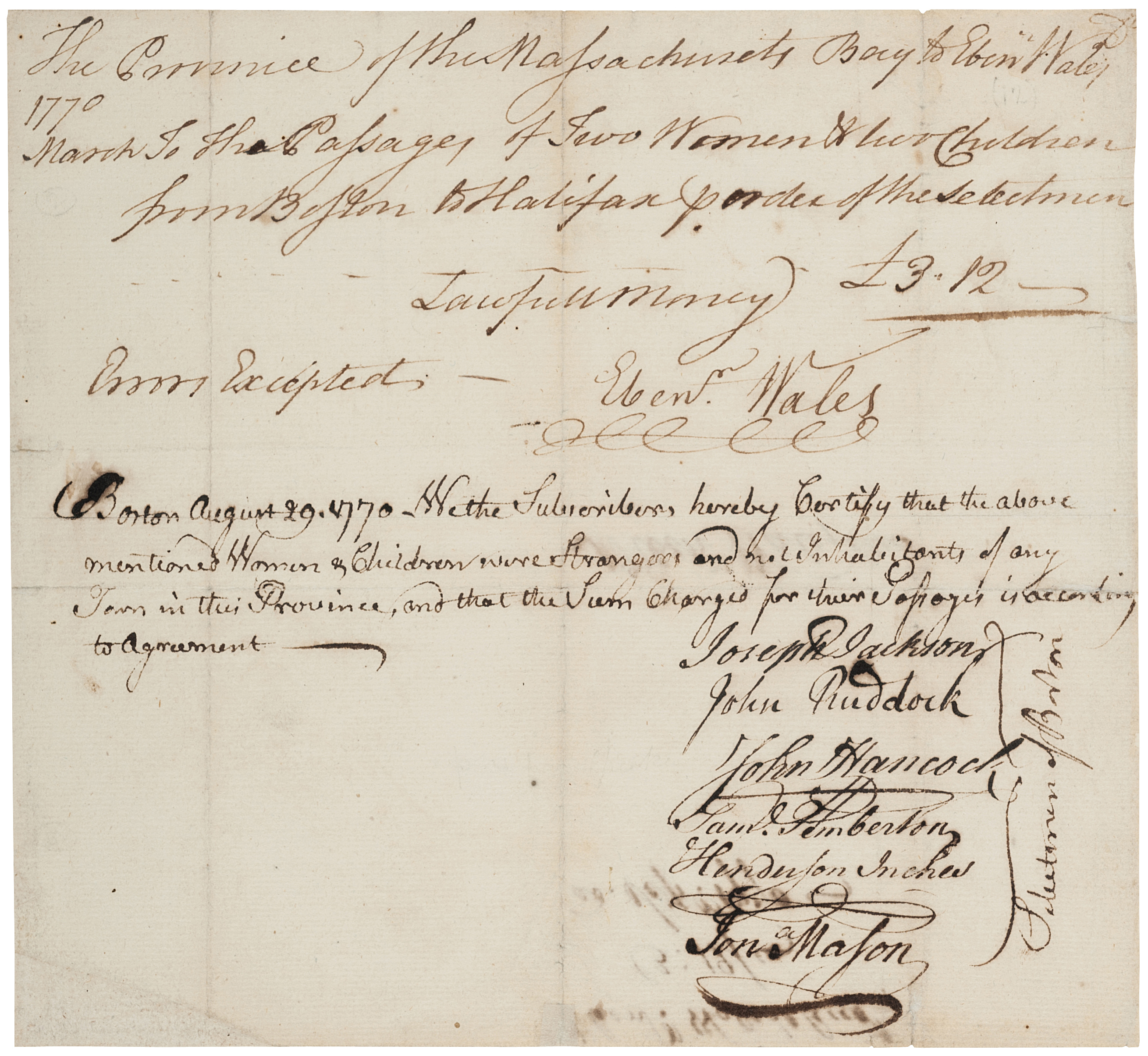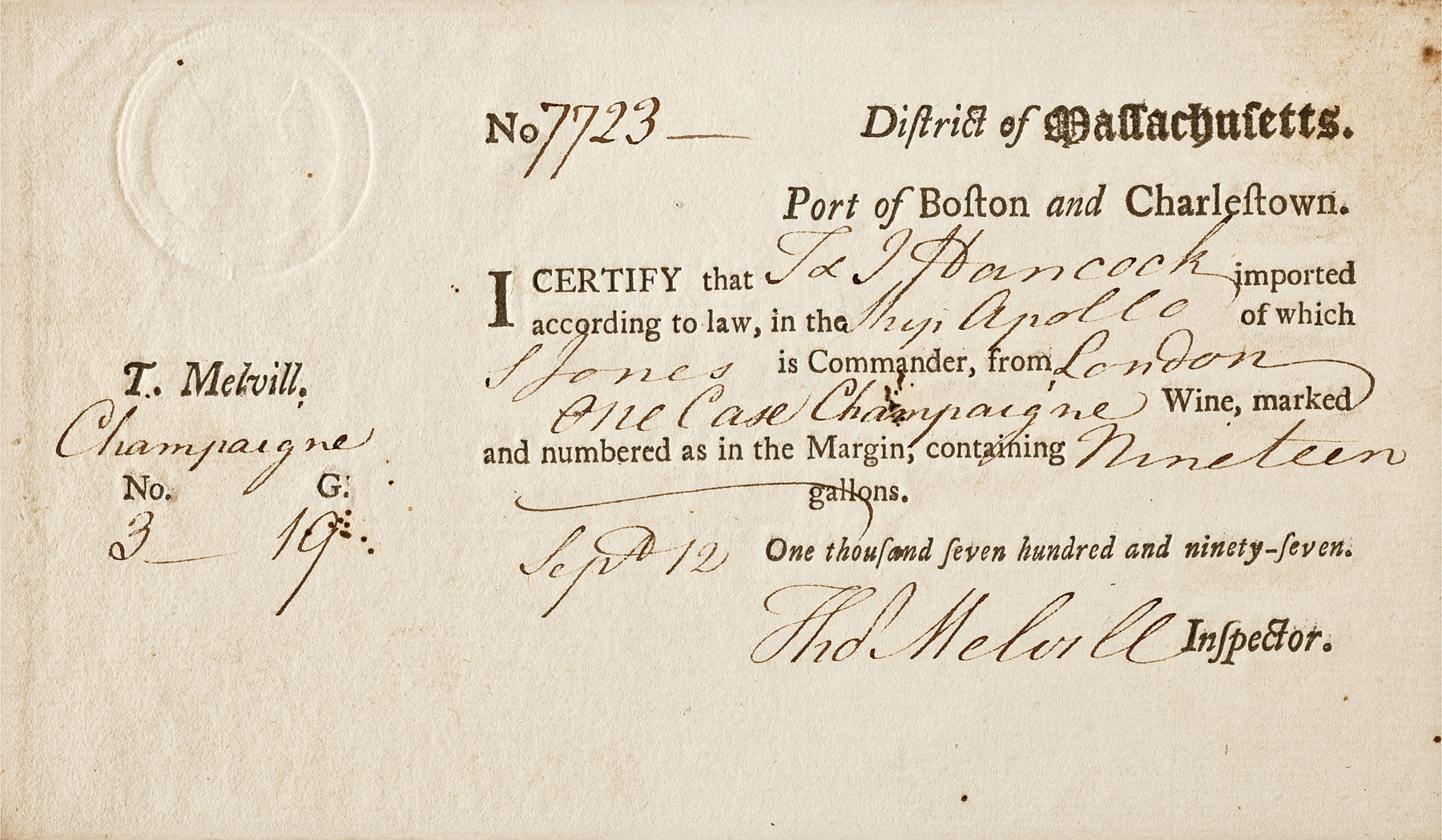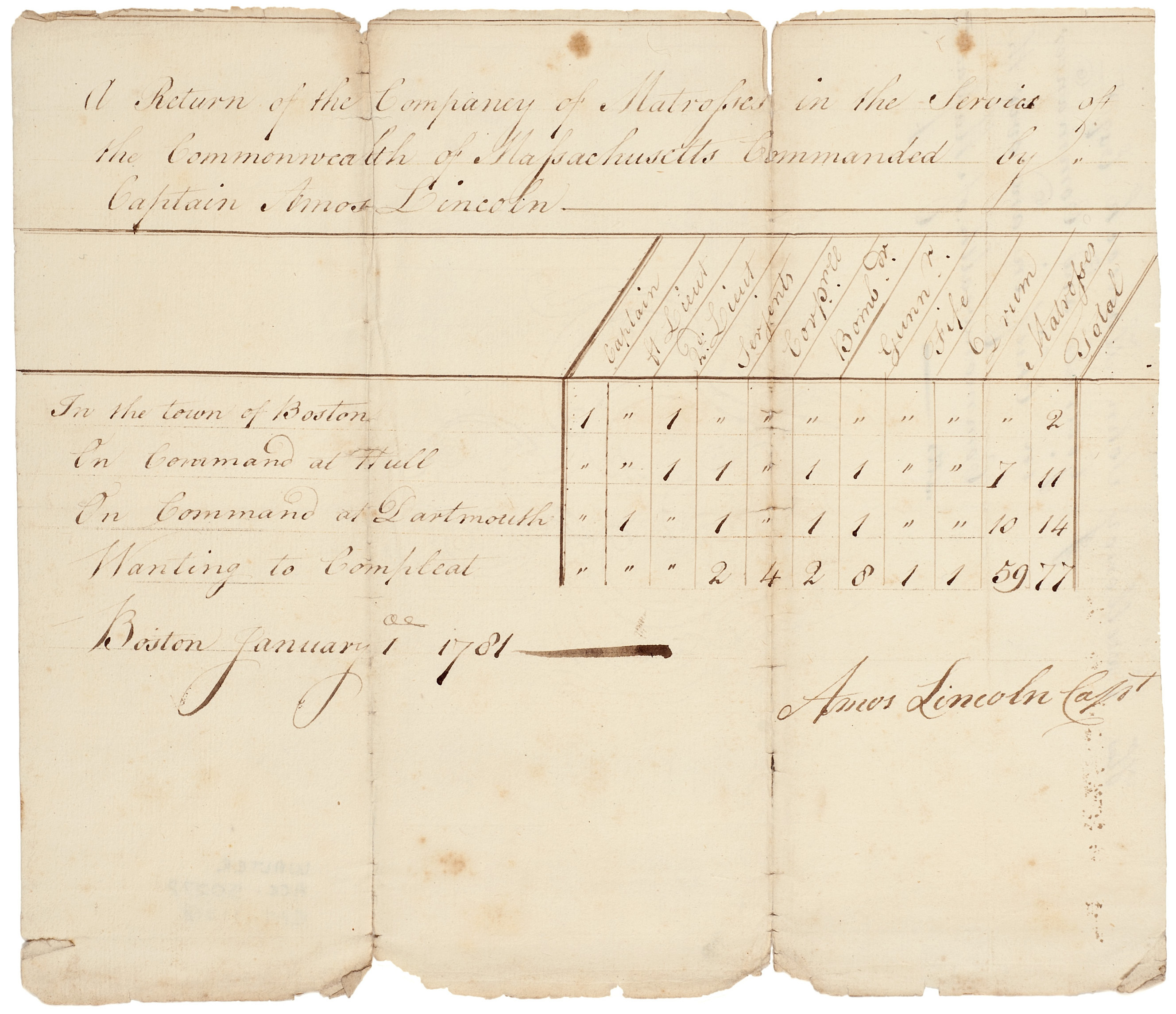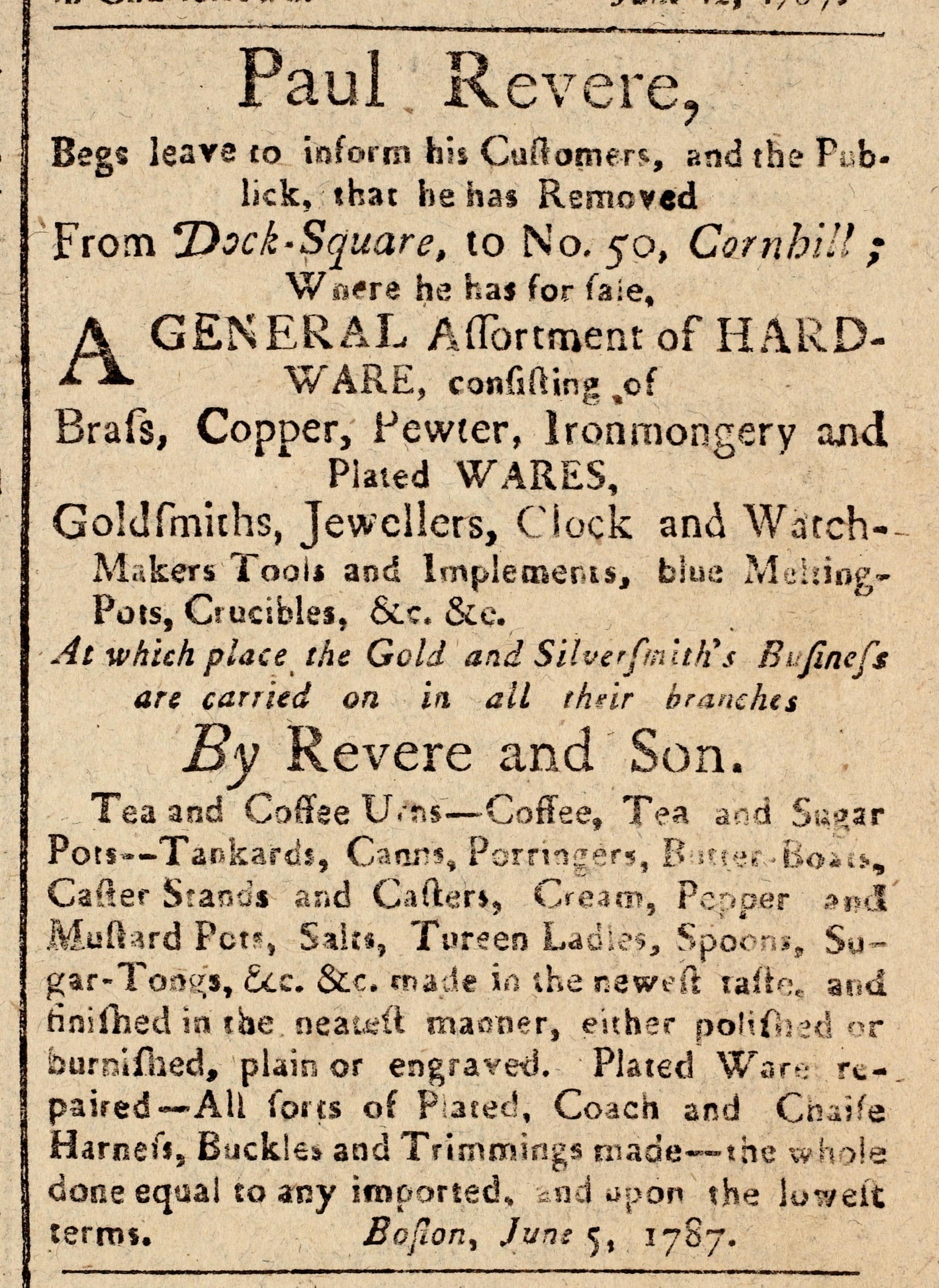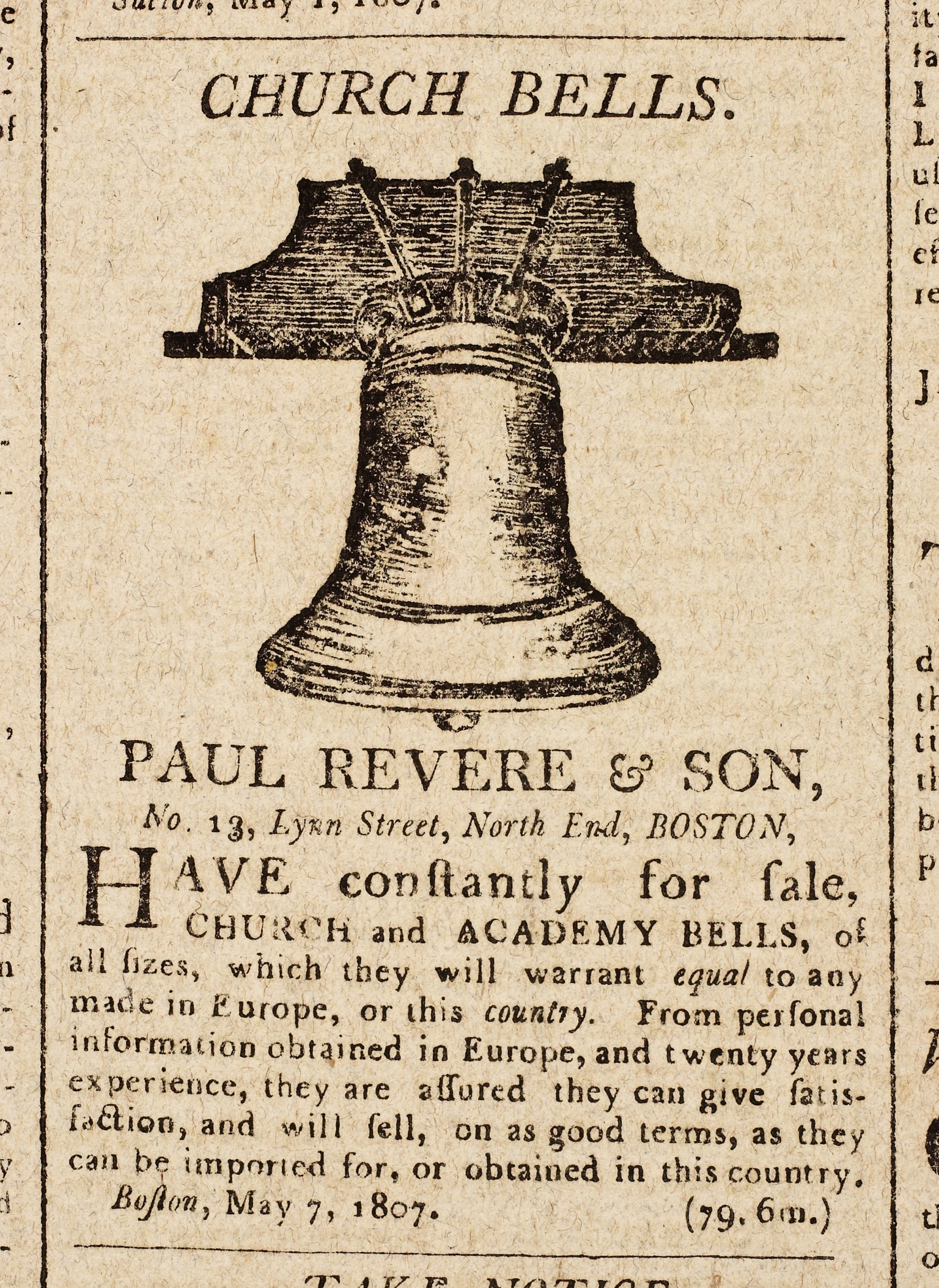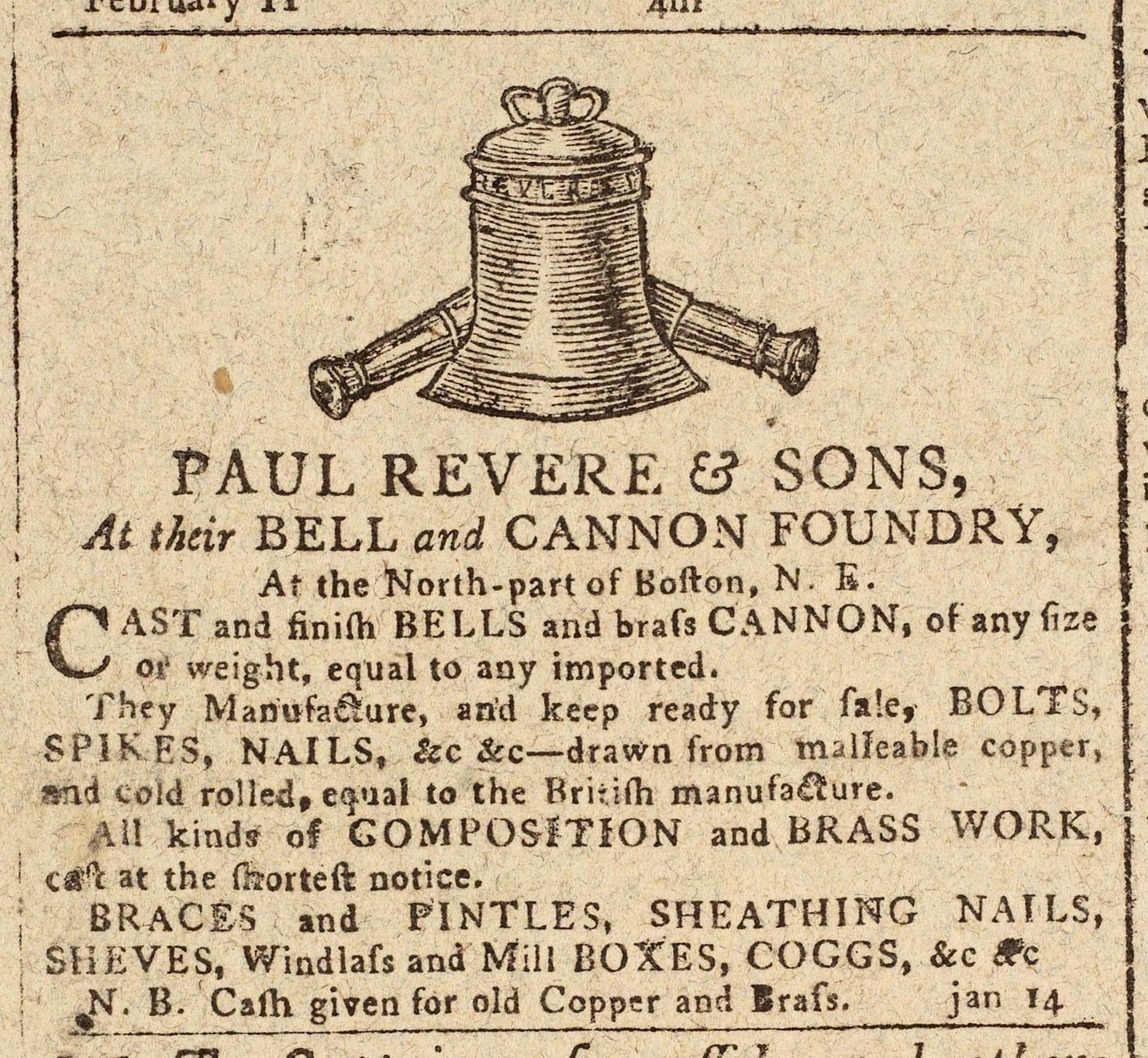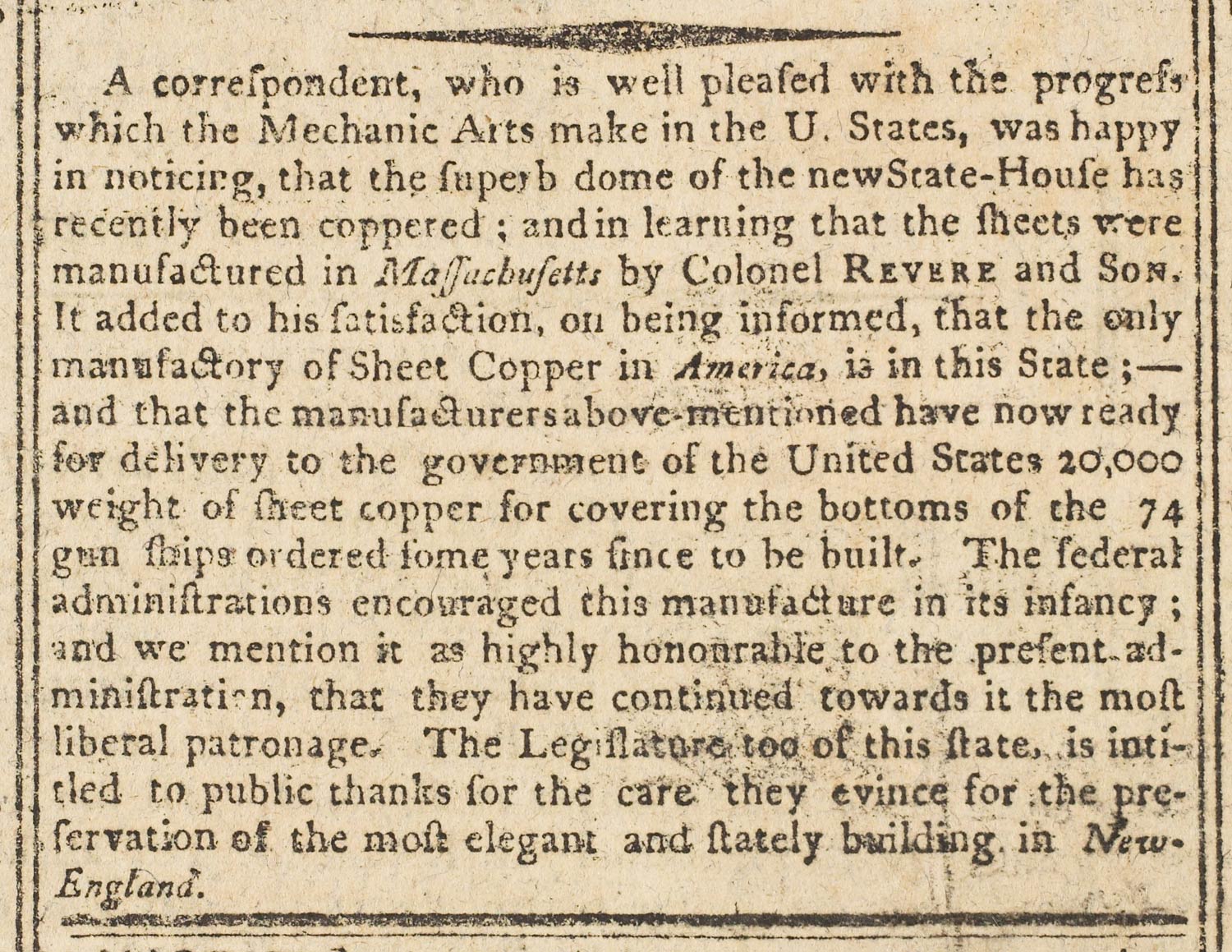Hold History
Primary Sources Bring the Past to Life
Ben’s Collection of Rare Documents and Historic Newspapers
All documents and newspapers shared on tour (winter tours excluded) are protected in rigid topload holders so tour participants, especially grade school students, can handle them freely without risking damage. When we reach Union Oyster House, along the Freedom Trail, there is a rare opportunity to hold an issue of the Massachusetts Spy from November 11, 1773, at the location where it was originally printed.
One of the rare documents you’ll hold on tour. Details about this item appear below.
John Hancock and five other Selectmen of Boston authorize passage of two women and their children from Boston to Halifax
John Hancock (1737-1793) An organizer of Boston’s Sons of Liberty; fourth president of the Continental Congress; signer of the Declaration of Independence; and first governor of the Commonwealth of Massachusetts.
Manuscript document signed, one page, 8.25″ x 7.75″, August 29, 1770. Hancock and five other Selectmen of Boston authorize passage of “two women & their children from Boston to Halifax per order of the Selectmen.” Signed at the conclusion by Hancock, Joseph Jackson, John Ruddock, Samuel Pemberton, Henderson Inches, and Jonathan Mason.
The sparks of the rebellion against the British crown had been ignited only a few months earlier when British troops, angered over a mob of taunting Bostonians, fired into the crowd of colonists, killing three people on the spot. Two more citizens later died from their wounds, and six survived injuries suffered in what became known as the Boston Massacre. Although additional citizen uprisings were averted when the Redcoats withdrew to islands in Boston Harbor, the unrest remained. The hostile environment—one in which the seeds of the American Revolution began to take root—became a cause of alarm for some residents. As such, many sought refuge outside of the thirteen colonies—such as the women and children here for whom Hancock and his fellow selectmen allowed passage to Halifax.
John Hancock and five other Selectmen of Boston authorize passage of two women and their children from Boston to Halifax
John Hancock (1737-1793) An organizer of Boston’s Sons of Liberty; fourth president of the Continental Congress; signer of the Declaration of Independence; and first governor of the Commonwealth of Massachusetts.
Manuscript document signed, one page, 8.25″ x 7.75″, August 29, 1770. Hancock and five other Selectmen of Boston authorize passage of “two women & their children from Boston to Halifax per order of the Selectmen.” Signed at the conclusion by Hancock, Joseph Jackson, John Ruddock, Samuel Pemberton, Henderson Inches, and Jonathan Mason.
The sparks of the rebellion against the British crown had been ignited only a few months earlier when British troops, angered over a mob of taunting Bostonians, fired into the crowd of colonists, killing three people on the spot. Two more citizens later died from their wounds, and six survived injuries suffered in what became known as the Boston Massacre. Although additional citizen uprisings were averted when the Redcoats withdrew to islands in Boston Harbor, the unrest remained. The hostile environment—one in which the seeds of the American Revolution began to take root—became a cause of alarm for some residents. As such, many sought refuge outside of the thirteen colonies—such as the women and children here for whom Hancock and his fellow selectmen allowed passage to Halifax.
One of the rare documents you’ll hold on tour. Details about this item appear below.
Boston Tea Party participant Thomas Melvill certifies the import of a case of champagne by John Hancock’s nephews
Thomas Melvill (1751-1832) Massachusetts patriot, a member of the Sons of Liberty, a participant in the Boston Tea Party at age 22, and a Revolutionary War veteran.
Partly printed document , one page, 7.25″ x 4.25″, signed “Thos Melvill” as Inspector of the Port of Boston, dated September 12, 1797. A certification that “T & J Hancock imported according to law, in the Ship Apollo of which S. Jones is Commander, from London One Case Champaigne Wine, marked and numbered as in the Margin, containing Nineteen gallons.”
When John Hancock died in 1793 his nephews Thomas and John, sons of his brother Ebenezer, carried on their uncle’s mercantile business. They ran a store that was located “opposite the east end of Faneuil Hall, Market” according to this 1795 advertisement.
Thomas Melvill lived in Boston’s North End. Tea said to have been collected from his shoes after the Boston Tea Party is on display at the Old State House Museum. Here you can also see a portrait of Melvill from the 1780s and his tricorn hat. Melvill wore a tricorn hat in Boston long after they went out of fashion. That hat and his style of clothing from a bygone era made him the inspiration for a poem called “The Last Leaf” written by Oliver Wendell Holmes in 1831. Holmes referred to Melvill as “the last of the cocked hats” and would later write that Melvill reminded him of “a withered leaf which has held to its stem through the storms of autumn and winter, and finds itself still clinging to its bough while the new growths of spring are bursting their buds and spreading their foliage all around it.”
Boston Tea Party participant Thomas Melvill certifies the import of a case of champagne by John Hancock’s nephews
Thomas Melvill (1751-1832) Massachusetts patriot, a member of the Sons of Liberty, a participant in the Boston Tea Party at age 22, and a Revolutionary War veteran.
Partly printed document , one page, 7.25″ x 4.25″, signed “Thos Melvill” as Inspector of the Port of Boston, dated September 12, 1797. A certification that “T & J Hancock imported according to law, in the Ship Apollo of which S. Jones is Commander, from London One Case Champaigne Wine, marked and numbered as in the Margin, containing Nineteen gallons.”
When John Hancock died in 1793 his nephews Thomas and John, sons of his brother Ebenezer, carried on their uncle’s mercantile business. They ran a store that was located “opposite the east end of Faneuil Hall, Market” according to this 1795 advertisement.
Thomas Melvill lived in Boston’s North End. Tea said to have been collected from his shoes after the Boston Tea Party is on display at the Old State House Museum. Here you can also see a portrait of Melvill from the 1780s and his tricorn hat. Melvill wore a tricorn hat in Boston long after they went out of fashion. That hat and his style of clothing from a bygone era made him the inspiration for a poem called “The Last Leaf” written by Oliver Wendell Holmes in 1831. Holmes referred to Melvill as “the last of the cocked hats” and would later write that Melvill reminded him of “a withered leaf which has held to its stem through the storms of autumn and winter, and finds itself still clinging to its bough while the new growths of spring are bursting their buds and spreading their foliage all around it.”
One of the rare documents you’ll hold on tour. Details about this item appear below.
Boston Tea Party participant and Revolutionary War soldier Captain Amos Lincoln submits an artillery company report to Governor John Hancock
Amos Lincoln (1753-1829) Participant in the Boston Tea Party at age 20; Revolutionary War soldier who fought at Bunker Hill; and master carpenter who from 1795 to 1798 was involved in the construction of the State House.
Autograph document dated January 1, 1781, one page, 9.25″ x 8″, signed, “Amos Lincoln, Capt.” A report from Captain Amos Lincoln submitted to Governor John Hancock detailing the return of a company of matrosses (artillery privates) in the service of the Commonwealth of Massachusetts commanded by Lincoln.
Amos Lincoln was a private in Colonel John Stark’s regiment at Bunker Hill and later served in Colonel Thomas Crafts Jr.’s artillery regiment. He had been an apprentice to Thomas Crafts Sr. who taught him the carpentry trade and helped Amos obtain an Indian disguise, then prayed for his safety, prior to the Boston Tea Party. This story was told by Amos Lincoln’s grandson Frederic W. Lincoln Jr., the 16th and 18th mayor of Boston, who was the first person to speak out publicly about his ancestor’s participation in the Destruction of the Tea in Boston Harbor.
Thirteen days after writing the report he submitted to Governor Hancock, Amos Lincoln married Deborah Revere, daughter of Paul Revere. They had nine children together before she passed away in January 1797. In May of that year Amos married Deborah’s younger sister, Elizabeth, and had five more children. Deborah and Elizabeth likely rest with Amos in Boston’s Copp’s Hill Burying Ground.
This rare early American military document is from John Hancock’s personal retained files (The Hancock-Chase Collection), formerly housed at the Smithsonian’s National Museum of American History before it was consigned to Butterfields for auction.
Boston Tea Party participant and Revolutionary War soldier Captain Amos Lincoln submits an artillery company report to Governor John Hancock
Amos Lincoln (1753-1829) Participant in the Boston Tea Party at age 20; Revolutionary War soldier who fought at Bunker Hill; and master carpenter who from 1795 to 1798 was involved in the construction of the State House.
Autograph document dated January 1, 1781, one page, 9.25″ x 8″, signed, “Amos Lincoln, Capt.” A report from Captain Amos Lincoln submitted to Governor John Hancock detailing the return of a company of matrosses (artillery privates) in the service of the Commonwealth of Massachusetts commanded by Lincoln.
Amos Lincoln was a private in Colonel John Stark’s regiment at Bunker Hill and later served in Colonel Thomas Crafts Jr.’s artillery regiment. He had been an apprentice to Thomas Crafts Sr. who taught him the carpentry trade and helped Amos obtain an Indian disguise, then prayed for his safety, prior to the Boston Tea Party. This story was told by Amos Lincoln’s grandson Frederic W. Lincoln Jr., the 16th and 18th mayor of Boston, who was the first person to speak out publicly about his ancestor’s participation in the Destruction of the Tea in Boston Harbor.
Thirteen days after writing the report he submitted to Governor Hancock, Amos Lincoln married Deborah Revere, daughter of Paul Revere. They had nine children together before she passed away in January 1797. In May of that year Amos married Deborah’s younger sister, Elizabeth, and had five more children. Deborah and Elizabeth likely rest with Amos in Boston’s Copp’s Hill Burying Ground.
This rare early American military document is from John Hancock’s personal retained files (The Hancock-Chase Collection), formerly housed at the Smithsonian’s National Museum of American History before it was consigned to Butterfields for auction.
Paul Revere advertises his gold and silversmith’s business, hardware store, and bell foundry in Massachusetts newspapers
Paul Revere (1734-1818) A talented silversmith; a member of the Sons of Liberty; a participant in the Boston Tea Party at age 38; courier and express rider for the Boston Committee of Correspondence and Massachusetts Committee of Safety; Revolutionary War veteran; and industrialist.
On June 13, 1787, Paul Revere ran a combined advertisement for his gold and silversmith’s business and hardware store in the Massachusetts Centinel. On July 8, 1807, he ran an advertisement for his bell foundry in the Massachusetts Spy, or Worcester Gazette. You’ll hold the original newspapers containing these ads on tour and view another promoting Revere’s bell and cannon foundry in the February 21, 1801, issue of the Columbian Centinel.
Paul Revere’s primary trade was that of a silversmith or master goldsmith. A highly skilled craftsman, Revere produced a wide range of work from simple spoons to full tea sets. He employed a number of apprentices and journeymen including his oldest son Paul Revere Jr. After the Revolution, the elder Revere left the day-to-day operations of the silversmith shop to his son Paul Jr. while he expanded his business interests and became one of America’s first industrialists. Revere ran a hardware store until 1789 and by 1788 had opened a foundry where he produced bolts, spikes, nails, and cannons. After 1792 he cast bells. In 1801, Paul Revere opened the first copper rolling mill in North America where he made copper sheeting for the dome of the new Massachusetts State House in 1802 and the U.S.S. Constitution in 1803.
Next page: The tale of Samuel Adams, Paul Revere, the State House cornerstone, and the oldest time capsule in America.
Paul Revere advertises his gold and silversmith’s business, hardware store, and bell foundry in Massachusetts newspapers
Paul Revere (1734-1818) A talented silversmith; a member of the Sons of Liberty; a participant in the Boston Tea Party at age 38; courier and express rider for the Boston Committee of Correspondence and Massachusetts Committee of Safety; Revolutionary War veteran; and industrialist.
On June 13, 1787, Paul Revere ran a combined advertisement for his gold and silversmith’s business and hardware store in the Massachusetts Centinel. On July 8, 1807, he ran an advertisement for his bell foundry in the Massachusetts Spy, or Worcester Gazette. You’ll hold the original newspapers containing these ads on tour and view another promoting Revere’s bell and cannon foundry in the February 21, 1801, issue of the Columbian Centinel.
Paul Revere’s primary trade was that of a silversmith or master goldsmith. A highly skilled craftsman, Revere produced a wide range of work from simple spoons to full tea sets. He employed a number of apprentices and journeymen including his oldest son Paul Revere Jr. After the Revolution, the elder Revere left the day-to-day operations of the silversmith shop to his son Paul Jr. while he expanded his business interests and became one of America’s first industrialists. Revere ran a hardware store until 1789 and by 1788 had opened a foundry where he produced bolts, spikes, nails, and cannons. After 1792 he cast bells. In 1801, Paul Revere opened the first copper rolling mill in North America where he made copper sheeting for the dome of the new Massachusetts State House in 1802 (see article below) and the U.S.S. Constitution in 1803.
From the November 17, 1802 issue of the Columbian Centinel and Massachusetts Federalist
Next page: The tale of Samuel Adams, Paul Revere, the State House cornerstone, and the oldest time capsule in America.

